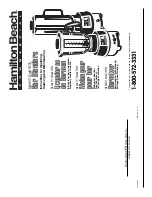
FunCtiOnality and perFOrmanCe
5.8
GHz
5.8
GHz
2.4
GHz
2.4
GHz
UNIT 1
Receives 2.4GHz
Transmits 5.8GHz
UNIT 2
Receives 5.8GHz
Transmits 2.4GHz
avOiding signal COnFliCts By using hOuse COdes
On each unit there are house Code and extender channel switches. when using wr200, it
is important that unit 2 is set to a different house Code than that used by the tX100 transmit-
ter. this is because, if set to the same house Code, unit 1 will receive signals from both tX100
and unit 2 and will not know which signal to use. this would result in a conflict in signals and
the wr200 would not function correctly.
eXtender Channel
the wr200 has 3 different settings for the internal 5.8ghz channels.
this feature makes it possible to use up to three wr200 systems in series in order to extend
network even further. Or if your home has several wifi problems that need to be handled and
circumvented. each pair of wr200s must be set to the same extender channel X,y or Z.
when plaCing wr200
when you position units 1 and 2, you can use the led indicators as a guide. they show a
continuous blue light to indicate that a connection has been established between transmitter
and receiver. when correctly placed, all led’s on both units 1 and 2 will show a continuous
blue light. try different placements to achieve the best signal. the tX100 transmitter must be
connected to a sound source and have a continuous blue light showing.
the wr200 can be hung on a wall using the hole in the rear.
hOw wr200 wOrks
the wr200 system consists of two units,
1 and 2. unit 1 is the first unit and
receives a signal (2.4ghz) from the tX100
transmitter and then relays the signal on
a different band (5.8ghz) to unit 2. unit
2 then transmits the signal on the 2.4ghz
band to all speakers.
Because the 5.8ghz band is stronger but
shorter in range than the 2.4ghz band,
wr200 will work around any difficult
conditions in a house that the wifi signal
encounters. we also use the 5.8ghz band
to avoid 2.4ghz audio signal conflict.




























